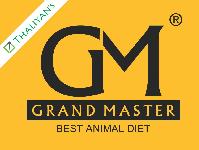It is often said that good animals are raised and not purchased. But raising calves is one of the most challenging and tedious tasks in any dairy farm enterprise. This is because the health and nutrition of the calves must be carefully planned and monitored to produce a well-grown vigorous animal. Also, the high mortality rate of the calves adds to the complexity of the process. Thus one should take extra care, especially during the pre-ruminant stage. Apart from colostrums feeding and milk replacers, one of the main steps where most dairy farmers go wrong is in the selection of calf starter feed.
When the calf is born, the rumen, reticulum and omasum are not fully developed and they function as a simple stomached (monogastric) animal. Thus the young calves are not capable of digesting normal feeds. Carefully chosen calf starters are provided to the calf at this stage for the development of rumen, reticulum and omasum. A good calf starter generally consists of a mixture of grains, protein sources, minerals and vitamins. It should also be a palatable feed.
Importance of starter feed
Apart from the role of starter feed in the development of the digestive system, starter feed also improves the overall health of the animal. A good quality starter feed is also known to improve the immunity of the animal by a great margin. A calf with good health and high immunity is less likely to be affected by depressing growth factors. A good starter feed is also proven to reduce the stress of weaning. It also helps in reducing diarrhoea in young calves. Thus the selection of calf starter feed has prime importance in the growth and development of calves.
When to use the starter feed?
When a calf is born, one should give the calf an adequate amount of water from day one and the calf starter supplements should be given from day three. During this time the calf is mainly dependent on liquid nutrition and the amount of calf starter should be small. This trend should be followed till the calf is two weeks old.
From week three onwards one may notice that the starter feed intake will increase gradually. This gradual increase must be carefully monitored because failing to notice the increase in intake will result in inadequate nutrition and poor development.
This will continue till the fourth week.
From week four, the calf will enter the weaning age and the starter feed intake will increase exponentially. This exponential spike should be carefully noticed to avoid malnutrition. This goes on until the eighth week.
From week eight to twelve, the calf continues to grow and develop, a sufficient amount of starters should be given regularly by not allowing periods without starters. When the calf reaches twelve weeks old, one should start feeding calf grower feed to make the calf ready for high fibre diets.
Properties of a good calf starter feed
Formulation
The nutrient content present in calf starters plays an important role because they are the prime source of energy for the development of the vital organs of the animals. Keeping that fact in mind it should also be noted that one must not include heavy nutrients in the formula. For example, the calf starter should not contain urea because the calves are unable to digest urea.
A commonly accepted nutrient composition for calf starters is given below.
- About 16-20 % percentage crude protein
- 0.70 % calcium
- 0.45% phosphorous
- 0.65% potassium
- About 10 ppm (parts per million) copper
- 40 ppm zinc
- 40 ppm manganese
- 0.10 ppm cobalt
- 0.30 ppm selenium
Additional supplements of vitamin A (about 4000 IU or International Units per kilogram), vitamin D (about 595 IU per kg) and vitamin E (about 25 IU per kg) are also required.
The quality and quantity of these nutrients must be considered before formulating a calf starter feed. Several calf starter formulas include these nutrient requirements. One common formula used widely to obtain the above nutrient requirements is by using about 317 kg of coarse ground oats with 272 kg of cracked corn, 215 kg of 48% soybean meal, 68 kg of molasses, 7 kg of white salt, 7 kg of dicalcium phosphate and 9 kg of limestone. The additional vitamin supplements for the calves can be given by adding the required amount of vitamin premixes that are readily available in the market.







